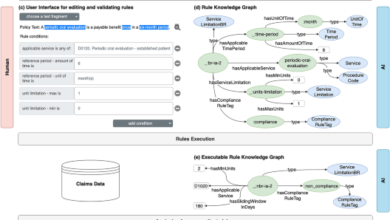Beyond Nvidia: 1 Artificial Intelligence (AI) Stock With More Upside to Buy Now, According to Wall Street

Wall Street sees only modest upside in Nvidia, but analysts are projecting significant gains for Snowflake shareholders.
The S&P 500 (^GSPC 0.11%) has advanced 11% year to date, and Nvidia (NVDA 4.89%) alone is responsible for one-third of those gains. The chipmaker has seen its share price surge 121% since January due to strong demand for data-center compute and networking products, especially those related to artificial intelligence.
However, Wall Street expects Nvidia to lose momentum over the next year. The median 12-month price target of $1,200 per share implies just 6% upside from its current price of $1,137 per share. By comparison, Snowflake (SNOW 0.55%) carries a median 12-month price target of $205 per share, implying 51% upside from its current price of $136 per share.
Is it time to sell Nvidia and buy Snowflake? Here’s what investors should know.
1. Nvidia
Nvidia reported blockbuster financial results in the first quarter of fiscal 2025 (ended April 28). Revenue increased 262% to $26 billion, and non-GAAP net income surged 461% to $6.12 per diluted share. Demand for artificial intelligence (AI) compute and networking products was the driving force behind those stellar numbers, reflected by 427% sales growth in the data-center product category.
Growth will inevitably slow at some point, but Grand View Research estimates that sales across AI hardware, software, and services will compound at 37% annually through 2030. Nvidia is well positioned to benefit due to its technological prowess and broad product portfolio. The company is best known for its graphics processing units (GPUs), but Nvidia actually builds entire AI data centers, and it has recently branched into subscription software and cloud services.
CEO Jensen Huang explained that advantage on the most recent earnings call. “We literally build the entire data center, and we can monitor everything, measure everything, and optimize across everything,” he told analysts. “This deep, intimate knowledge at the entire data center scale is fundamentally what sets us apart today.” Indeed, that advantage not only gives Nvidia multiple opportunities for monetization but also supports the rapid product development that has kept Nvidia consistently ahead of its peers.
For instance, the latest MLPerf benchmarks — a series of industry-standard tests that assess the performance of AI platforms — showed that Nvidia Hopper GPUs running Nvidia TensorRT LLM software delivered the fastest performance running inference on generative AI models. Nvidia achieves similar results on a regular basis, and that has naturally led to market dominance. Nvidia holds more than 90% market share in data-center GPUs and more than 80% market share in AI processors.
With that in mind, Wall Street expects the company to grow earnings per share at 38% annually over the next three to five years, a reasonable estimate given how quickly AI sales are projected to increase. However, the stock still looks pricey at 65.6 times earnings, which may explain why Wall Street is more bullish on Snowflake.
Personally, I think patient investors can buy a small position in Nvidia today, provided they understand the risk. Namely, shares could plunge if earnings grow more slowly than analysts anticipate. That said, I also think Snowflake is the more attractive stock at its current price.
2. Snowflake
Snowflake helps businesses unify and make sense of data. Its platform functions as both a data lake and data warehouse. The former stores raw data for analytics and artificial intelligence, and the latter stores processed data optimized for queries and business intelligence. The Snowflake Marketplace supports data sharing and monetization, and the company’s Native Application Framework helps businesses build and monetize applications on the platform.
Snowflake is unique in its ability to support data lake, data warehouse, and data-sharing workloads on a single platform that runs across all three major public clouds. Additionally, Forrester Research recently recognized the company as a leader in cloud-data warehousing, awarding it perfect scores for performance, innovation, and product roadmap.
Snowflake reported mixed financial results in the first quarter. Revenue increased 33% to $829 million due to solid customer growth and increased spending among existing customers, but non-GAAP net income declined 7% to $0.14 per dilute share. On the bright side, growth in remaining performance obligation (RPO) accelerated to 46% during Q1. RPO is a barometer for sales-pipeline momentum. Put differently, an acceleration in RPO hints at a possible acceleration in revenue in future quarters.
Building on that idea, Snowflake currently earns the vast majority of revenue from core data-warehouse and data-lake capabilities. But newer products like the Snowpark developer framework and Cortex AI services should become larger sources of cash flow in the years ahead. Analysts at Morgan Stanley estimate that new products could account for 14% of revenue in fiscal 2027 (ends January 2027), up from zero in fiscal 2024.
Looking ahead, data lake and data warehouse sales are projected to increase at 24% annually though 2030. Wall Street expects slightly slower results from Snowflake, with the consensus forecast calling for sales to grow at 23% annually over the next three years. Personally, I think Snowflake could easily top that consensus estimate once it begins monetizing new AI features in earnest.
However, even if Wall Street analysts are correct, Snowflake shares look cheap at their current valuation of 14.9 times sales, especially when the three-year average is 24.3 time sales. In fact, Snowflake has never traded at a cheaper sales multiple in history. Investors should consider buying a small position in this growth stock today.



